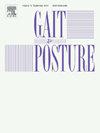Preventive interventions for medial tibial stress syndrome: Systematic review and meta-analysis
IF 2.2
3区 医学
Q3 NEUROSCIENCES
引用次数: 0
Abstract
Background
Several randomized clinical trials have investigated preventive interventions for Medial Tibial Stress Syndrome (MTSS), but their findings remain controversial.
Research question
Which interventions are effective in preventing MTSS?
Methods
This systematic review included randomized clinical trials evaluating preventive strategies for MTSS. In December 2023, we conducted a literature search in CAPES Periodicals portal, PUBMED, Web of Science, OVID, ScienceDirect Journals, Directory of Open Access Journals (DOAJ), and PEDro, identifying 4192 records. A total of 12 studies with 8197 participants met the inclusion criteria, with 10 eligible for meta-analysis. The risk of bias was assessed using the PEDro scale and the certainty in the scientific evidence rated through the GRADE system.
Results
Meta-analyses indicated that neuromuscular training (four studies, 3887 individuals, 95 %CI Odds Ratio 0.13, 0.64) and overpronation insoles (four studies, 1047 individuals, 95 %CI Odds Ratio 0.10, 1.0) are effective in preventing MTSS, with high and moderate certainty of evidence, respectively. In contrast, shock-absorbing insoles showed no significant effect (two studies, 1571 individuals, 95 %CI Odds Ratio 0.28, 1.08), with high certainty of evidence. There is no evidence supporting the use of static stretching programs or special socks for MTSS prevention. The methodological quality of the included studies varied.
Significance
Neuromuscular training and overpronation insoles are recommended for MTSS prevention, whereas shock-absorbing insoles should not be used for this purpose.
胫骨内侧应激综合征的预防性干预:系统回顾和荟萃分析
背景:一些随机临床试验研究了内侧胫骨应激综合征(MTSS)的预防性干预措施,但他们的发现仍然存在争议。研究问题:哪些干预措施对预防MTSS有效?方法本系统综述纳入评估MTSS预防策略的随机临床试验。2023年12月,我们在CAPES期刊门户网站、PUBMED、Web of Science、OVID、ScienceDirect Journals、Directory of Open Access Journals (DOAJ)和PEDro中进行了文献检索,共检索到4192条记录。共有12项研究8197名受试者符合纳入标准,其中10项符合meta分析。使用PEDro量表和GRADE系统评定的科学证据的确定性来评估偏倚风险。结果荟萃分析显示,神经肌肉训练(4项研究,3887人,95 %CI比值比0.13,0.64)和过度内旋鞋垫(4项研究,1047人,95 %CI比值比0.10,1.0)可有效预防MTSS,证据确定性分别为高和中等。相比之下,减震鞋垫没有明显的效果(两项研究,1571人,95 %CI优势比0.28,1.08),证据的确定性很高。没有证据支持使用静态拉伸程序或特殊袜子来预防MTSS。纳入研究的方法学质量各不相同。神经肌肉训练和过度内旋鞋垫被推荐用于预防MTSS,而减震鞋垫不应用于此目的。
本文章由计算机程序翻译,如有差异,请以英文原文为准。
求助全文
约1分钟内获得全文
求助全文
来源期刊

Gait & posture
医学-神经科学
CiteScore
4.70
自引率
12.50%
发文量
616
审稿时长
6 months
期刊介绍:
Gait & Posture is a vehicle for the publication of up-to-date basic and clinical research on all aspects of locomotion and balance.
The topics covered include: Techniques for the measurement of gait and posture, and the standardization of results presentation; Studies of normal and pathological gait; Treatment of gait and postural abnormalities; Biomechanical and theoretical approaches to gait and posture; Mathematical models of joint and muscle mechanics; Neurological and musculoskeletal function in gait and posture; The evolution of upright posture and bipedal locomotion; Adaptations of carrying loads, walking on uneven surfaces, climbing stairs etc; spinal biomechanics only if they are directly related to gait and/or posture and are of general interest to our readers; The effect of aging and development on gait and posture; Psychological and cultural aspects of gait; Patient education.
 求助内容:
求助内容: 应助结果提醒方式:
应助结果提醒方式:


